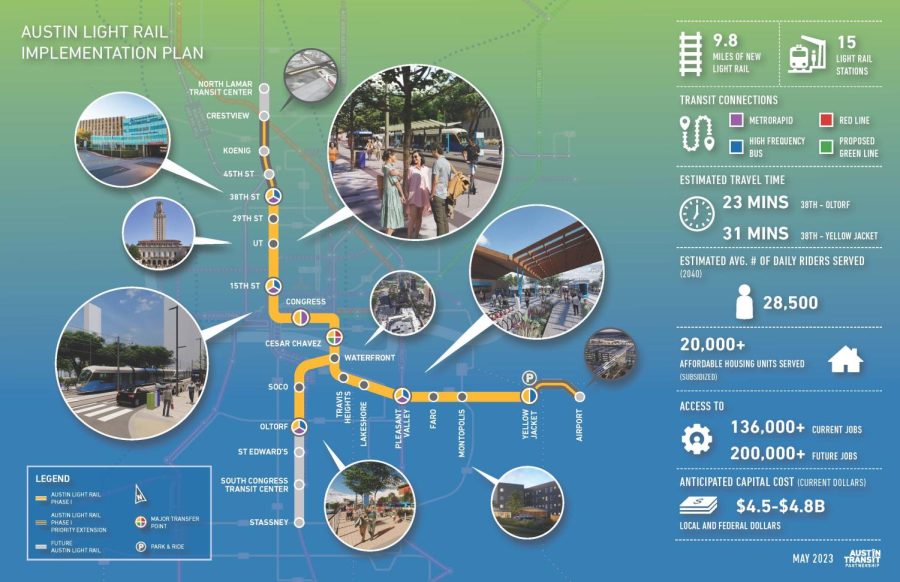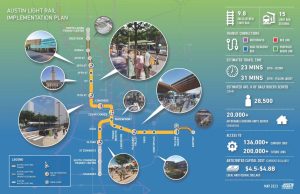‘Prepare our city for a sustainable future’: city leaders approve Project Connect light rail plan
June 26, 2023
On June 6, Austin city leaders officially approved Project Connect, the city’s estimated $4.5 to $4.8 billion project. Project Connect would create nearly 10 miles of light rail network and serve an estimated 28,500 riders per day.
The Austin City Council, Austin Transit Partnership and Capital Metro Board voted to adopt phase one of the project.
History of Project Connect
In 2020, Austin voters overwhelmingly supported a property tax increase to finance Project Connect. The vote approved funds for constructing, maintaining and creating a new local government corporation called Austin Transit Partnership.
Peter Mullan, the executive vice president for architecture and urban design for the Austin Transit Partnership, said ATP has worked toward implementing new programs throughout Austin in addition to Project Connect.
These programs include expanding Austin’s Metro Rapid system, improving local services like the red line, establishing a new commuter rail and allocating $300 million toward anti-displacement initiatives.
The Plan
Scaled back from its original design, the light rail will be a 9.8-mile street train through downtown Austin that splits across Lady Bird Lake. One route will extend eastward on Riverside Drive until it reaches Yellow Jacket Lane, stopping before the Austin-Bergstrom International Airport. The other route will proceed along South Congress Avenue until it reaches Oltorf Street, with 15 stations along the way.
The addition of routes north of Crestview and east of the Austin-Bergstrom International Airport depends on future funding approval.
The light rail will include a stop at the University to help students better navigate Austin.
Opposition
Students opposed to Project Connect are concerned about the displacement of local businesses, while others believe the long-term benefits outweigh the short-term consequences.
Civil engineering senior Donovan Meade said West Campus would feel safer and easier to connect with through Project Connect.
“Obviously, no one wants houses and businesses to be displaced, but I’d much rather have a train than a burger,” Meade said. “(Displacement) is a problem … but long term, I think the benefits (of Project Connect) greatly outweigh the cost.”
Greg Anderson, the City of Austin planning commissioner, said Project Connect would benefit Austin and make places such as West Campus more efficient.
“People want to be on two feet, ride their bikes, and enjoy the public realm safely. Unfortunately, there’s been a long period of time where we designed our cities and our public spaces around automobiles,” said Anderson, a professor in the Department of Geography and the Environment. “Figuring out ways to build for people versus automobiles is really the next step of city evolution.”
What comes next?
The plan is still preliminary, and stops will likely be modified. Mullan said the city continues to work with ATP and CapMetro to ensure the light rail stays efficient for all Austinites and connects to other forms of transportation.
“We are providing additional options to serve a whole lot of Austinites to move them around more efficiently, faster, more inexpensively,” Mullan said. “Those options are going to be what prepare our city for a sustainable future.”












